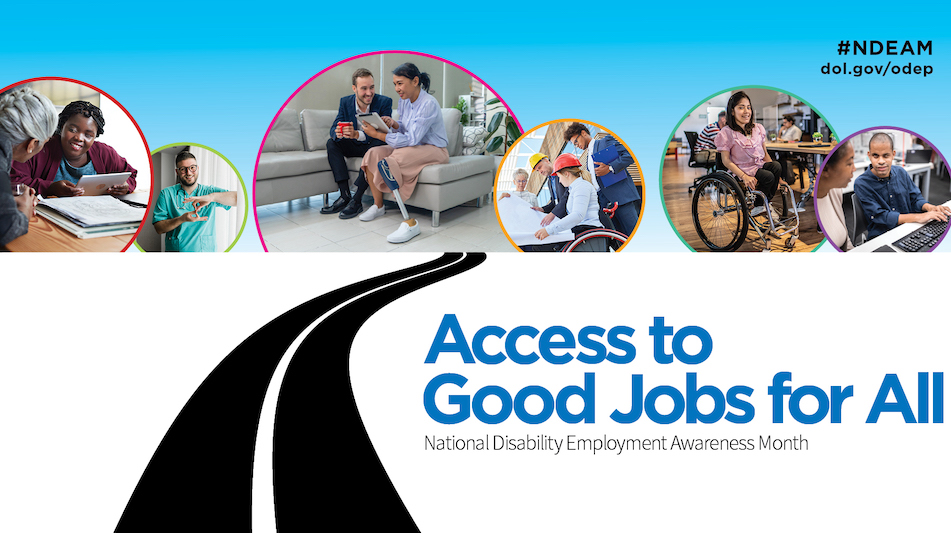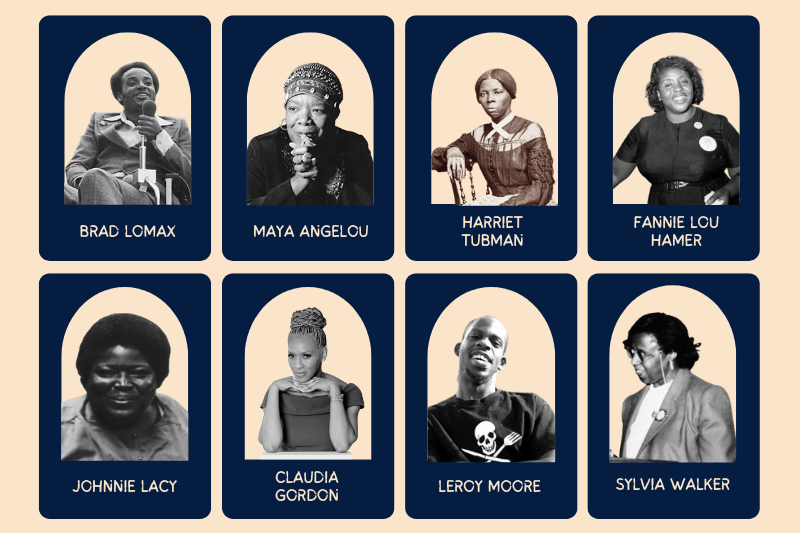October is Disability Employment Awareness Month (DEAM), a time to recognize the contributions of people with disabilities in the workforce. Established by the U.S. Congress in 1945 as National Employ the Physically Handicapped Week, this month-long observance has evolved to focus on the vast potential that individuals with all types of disabilities bring to their workplaces.
For people with disabilities, employment can be a transformative experience, providing not only financial independence but also a sense of purpose, community, and personal growth. Unfortunately, many people with disabilities still face significant barriers when seeking employment, from inaccessible workplaces to discrimination and misconceptions about their capabilities.
This year, the theme for DEAM is “Advancing Access and Equity,” which highlights the importance of creating inclusive work environments where all employees can thrive. It encourages organizations to examine their current policies and practices, striving to break down barriers and create pathways to success for employees with disabilities.
Why Disability Employment Matters
The employment rate for people with disabilities continues to lag behind that of their non-disabled peers. According to the U.S. Bureau of Labor Statistics (BLS), in 2022, only 21.3% of people with disabilities were employed, compared to 65.4% of non-disabled individuals. This gap represents a significant loss of talent for employers and a missed opportunity for people with disabilities to achieve their full potential.
Employment is more than just a paycheck. It is a vital component of an independent life. People with disabilities who are employed have better health outcomes, improved social integration, and higher self-esteem compared to those who are unemployed. Being part of a workforce fosters a sense of accomplishment, belonging, and confidence, which are crucial for overall well-being.
Moreover, research shows that inclusive workplaces are good for business. Companies that prioritize diversity and inclusion, including the hiring of individuals with disabilities, report higher levels of innovation, better employee retention, and a more positive organizational culture. Employing people with disabilities isn’t just the right thing to do—it makes good business sense.
Breaking Down Barriers
Despite the numerous benefits of employing people with disabilities, many barriers still exist in the workplace. Some of these obstacles include:
- Accessibility: Many workplaces are still not fully accessible to individuals with disabilities. Whether it’s a lack of physical access (ramps, elevators, etc.) or technological barriers (inaccessible software or websites), ensuring that the workplace is fully accessible is a critical step toward fostering inclusivity.
- Discrimination and Bias: Unfortunately, negative stereotypes and biases about the abilities of individuals with disabilities persist. Many employers may not realize that people with disabilities are fully capable of performing the same tasks as their non-disabled peers, often with minimal or no accommodations.
- Lack of Support: Many employers lack the knowledge or resources to adequately support employees with disabilities. This includes providing reasonable accommodations, creating an inclusive workplace culture, and offering opportunities for career advancement.
Addressing these challenges requires a concerted effort from all levels of an organization. Employers need to invest in training, policy changes, and support systems that enable people with disabilities to succeed in their roles. This includes providing accessible work environments, offering flexibility for reasonable accommodations, and ensuring that employees with disabilities have equal opportunities for career growth.
How Organizations Can Support Disability Employment
Supporting disability employment is about more than just hiring people with disabilities — it’s about creating a culture where all employees feel valued and included. Here are a few ways organizations can foster an inclusive environment:
- Develop Accessible Workplaces: Ensure that all aspects of the workplace, from the physical space to digital tools, are accessible to people with disabilities. This includes making modifications where needed, such as installing ramps, adjusting lighting, providing screen readers, or offering flexible work schedules.
- Offer Accommodations: Providing reasonable accommodations is a legal requirement under the Americans with Disabilities Act (ADA), but it’s also essential for fostering an inclusive environment. Accommodations vary depending on the individual’s needs and might include assistive technologies, adjusted workstations, or modified schedules. Being open and willing to provide accommodations is key to creating an environment where everyone can thrive.
- Educate and Train Staff: Unconscious bias and misinformation can lead to exclusion in the workplace. Providing regular training for all staff members on disability awareness, inclusivity, and the importance of diversity can help break down misconceptions and promote a positive work environment.
- Focus on Abilities: When hiring and managing employees, focus on their skills and what they bring to the table, rather than their disabilities. People with disabilities possess a wide range of talents and abilities that make them valuable contributors to any organization.
- Celebrate Success Stories: Highlighting the achievements of employees with disabilities can serve as a powerful reminder of the value they bring to the workplace. It also reinforces the message that disability does not equate to inability.
Moving Forward
Disability Employment Awareness Month serves as a reminder of the progress we’ve made in disability rights, but also of the work that remains. Creating a truly inclusive workforce requires ongoing effort, education, and commitment from both employers and employees.
By breaking down barriers, addressing biases, and providing the necessary accommodations, we can ensure that people with disabilities have equal access to meaningful employment. In doing so, we not only empower people with disabilities to live more independently but also enrich our workplaces and communities.



